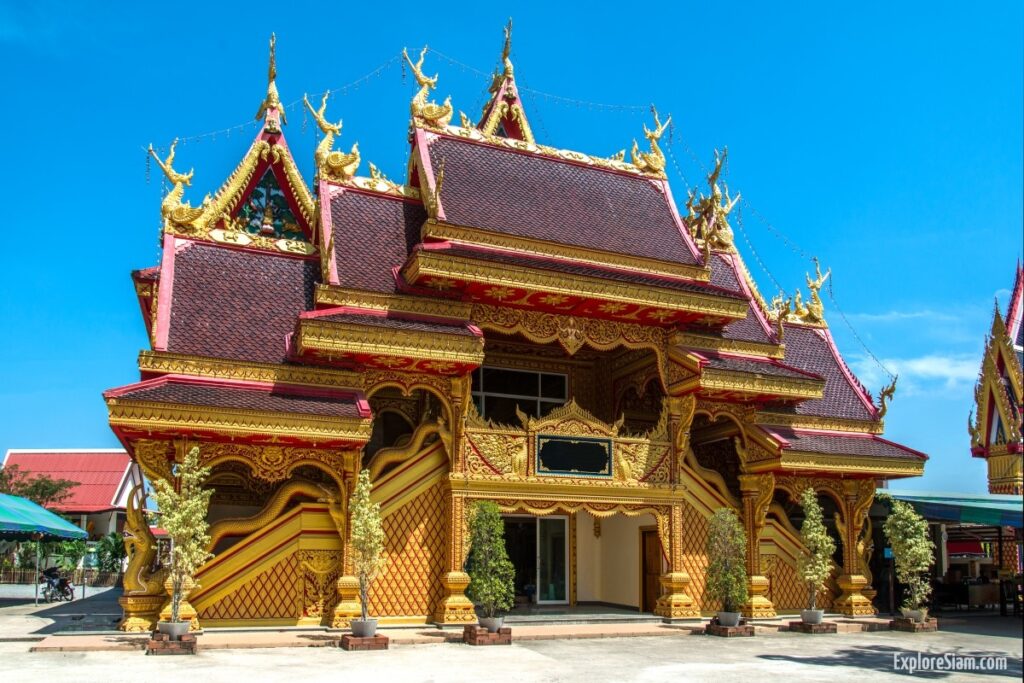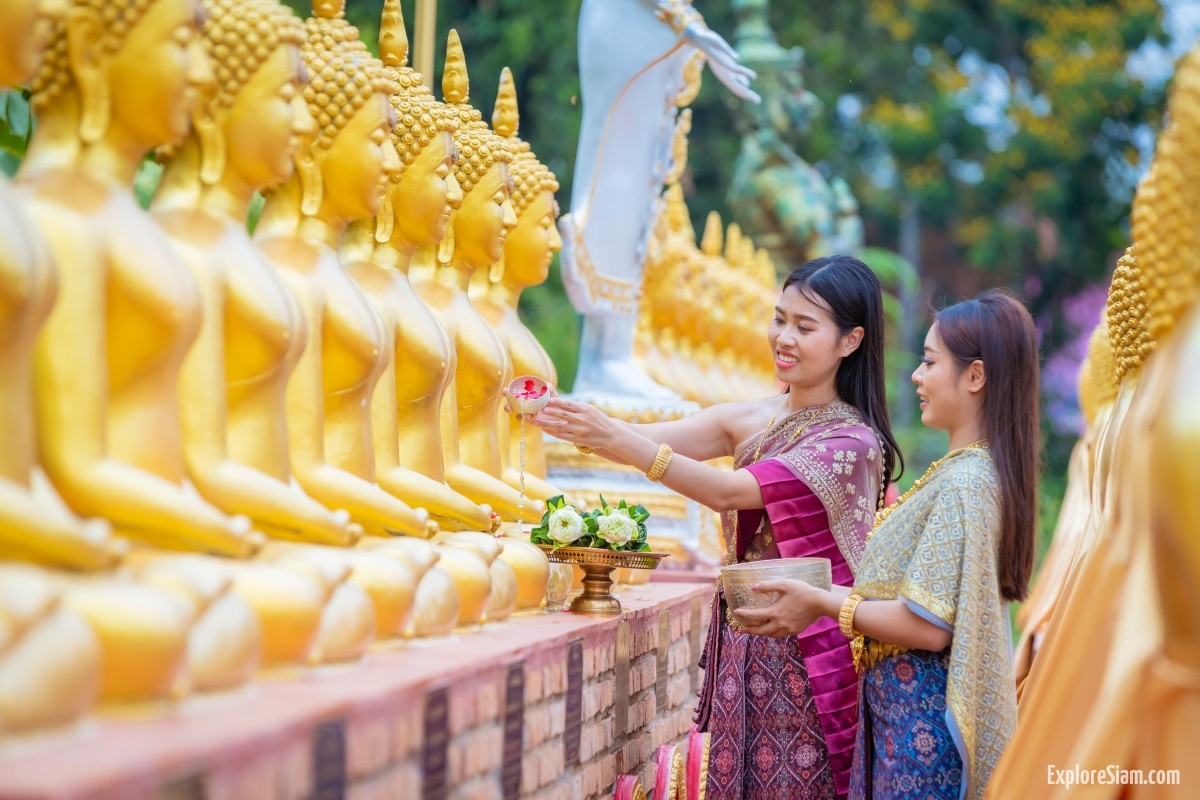Thailand is a country renowned for its rich cultural tapestry, and at the heart of this cultural vibrancy lies its diverse religious landscape. Understanding the major religions in Thailand offers a profound insight into the nation’s customs, festivals, and way of life. This guide delves into the prominent religious practices that shape Thailand’s identity.
Buddhism: The Predominant Faith
Buddhism, specifically Theravada Buddhism, is the dominant religion in Thailand, practiced by over 90% of the population. Its influence permeates every aspect of Thai culture and society. Temples, or “wats”, are not just places of worship but also community centers where people gather for various social activities. The teachings of Buddha, emphasizing the path to enlightenment through moral conduct, meditation, and wisdom, are deeply ingrained in the Thai way of life.
Monastic life plays a crucial role in Thai Buddhism. Many young men spend a period as monks, which is considered a rite of passage. This temporary ordination allows them to gain merit and is seen as a way to honor their families. Monks are highly respected, and their daily alms rounds, where they collect food from the community, are a common sight in Thai towns and cities.
Festivals such as Visakha Bucha, which commemorates the birth, enlightenment, and death of Buddha, and Makha Bucha, celebrating Buddha’s teachings, are major events in the Buddhist calendar. During these festivals, temples are adorned with lights and decorations, and people participate in candlelit processions, making merit by offering food, flowers, and prayers.

Islam: A Significant Minority
Islam is the second-largest religion in Thailand, predominantly practiced in the southern provinces near the border with Malaysia. Thai Muslims, who constitute about 5% of the population, are primarily Sunni. The Islamic community in Thailand is diverse, comprising ethnic Malays, Thais, and immigrants from South Asia and the Middle East.
Mosques are the centers of religious life for Thai Muslims. These places of worship also serve as community centers where people gather for prayers, educational activities, and social events. Islamic festivals, such as Eid al-Fitr and Eid al-Adha, are celebrated with great fervor. During Ramadan, the holy month of fasting, Muslims in Thailand observe fasts from dawn to sunset, breaking their fasts with family and community gatherings.
Despite being a minority, the Muslim community has made significant contributions to Thai culture, particularly in the areas of cuisine and trade. Halal food is widely available, and markets in southern Thailand often feature a blend of Thai and Malay culinary traditions.
Christianity: A Growing Presence
Christianity, primarily Roman Catholicism and Protestantism, has a smaller but growing presence in Thailand. Christian missionaries first arrived in Thailand in the 16th century, and their influence is seen in the establishment of schools and hospitals across the country.
Christian communities are found throughout Thailand, with larger concentrations in Bangkok and the northern regions. Churches are active in providing social services, including education, healthcare, and support for the underprivileged. Christian festivals such as Christmas and Easter are observed by the Christian population, often with services and community events that include both religious and cultural elements.
While Christianity in Thailand remains a minority religion, it has gained acceptance and respect for its contributions to social welfare and education. The Christian emphasis on charity and community service resonates well with the Thai values of compassion and generosity.
Hinduism: Ancient Roots and Modern Practices
Hinduism, although practiced by a small fraction of the population, has deep historical roots in Thailand. Hindu deities and mythology have significantly influenced Thai culture, art, and architecture. Hindu temples, such as the famous Sri Maha Mariamman Temple in Bangkok, serve as focal points for the Hindu community and are sites of vibrant religious festivals.
Many Thai customs and royal ceremonies are influenced by Hindu traditions. The annual Royal Ploughing Ceremony, which marks the beginning of the rice-planting season, has its origins in ancient Hindu rites. Hindu deities like Brahma, Vishnu, and Shiva are revered, and their images are often found in Thai temples alongside Buddhist icons.
Hindu festivals, including Diwali and Navaratri, are celebrated with traditional rituals, music, and dance. These festivals attract not only Hindus but also Thais from other religious backgrounds, showcasing the inclusive nature of Thai society.
Folk Beliefs and Animism: The Spirit World
In addition to the major organized religions, many Thais practice a form of animism, which involves the worship of spirits and ancestors. This belief system predates the introduction of Buddhism and continues to coexist with mainstream religious practices.
Spirit houses, or “san phra phum,” are a common sight in Thailand. These miniature houses, often elaborately decorated, are placed outside homes and businesses to appease spirits and bring good fortune. Offerings of food, flowers, and incense are made regularly to ensure the spirits’ favor and protection.
Animistic practices also involve rituals to honor ancestors and seek their guidance. These rituals are particularly prominent during traditional festivals such as Songkran, the Thai New Year, when people make merit and pay respects to their ancestors through various ceremonies.
Thailand’s religious landscape is a testament to its cultural richness and diversity. Buddhism, with its profound influence, shapes the moral and social fabric of Thai society, while Islam, Christianity, Hinduism, and animistic practices contribute to the country’s unique cultural mosaic. Understanding these religious traditions provides a deeper appreciation of Thailand’s history, customs, and the everyday lives of its people.





